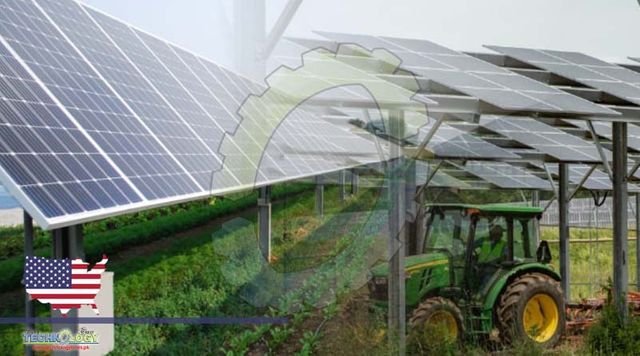In its 150-year history, Paul Knowlton’s farm in Grafton, Mass., has produced vegetables, dairy products and, most recently, hay. The evolution of the farm’s use turned on changing markets and a variable climate. Recently, however, Mr. Knowlton added a new type of cash crop: solar power Can Dual-Use Solar Panels Provide Power and Share Space With Crops?

For Mr. Knowlton, a fifth-generation farmer and the current owner, it was an easy call. He had already installed solar panels to provide electricity for his home and barn. When a real estate agent came knocking to see if he was interested in leasing a small portion of his land for a solar array, “she planted the seed that I could do more,” Mr. Knowlton looked at several companies but was most impressed with BlueWave Solar, a developer in Boston that focuses primarily on solar installations and battery storage, which allows excess electricity to be fed to the power grid. Soon, two small parcels of largely unused land were home to low-to-the-ground panels that produce power. This year, Mr. Knowlton’s farm will go one step further: In a third parcel, solar panels will share space with crops so that both can thrive.
This approach is called agrivoltaics a portmanteau of agriculture and voltaic cells, which transform solar power to electrical power. Also called dual-use solar, the technology involves adjusting the height of solar panels to as much as 14 feet, as well as adjusting the spacing between them, to accommodate equipment, workers, crops and grazing animals. The spacing and the angle of the panels allows light to reach the plants below, and has the added benefit of shielding those crops from extreme heat. The electricity generated gets uploaded to the grid, typically through nearby substations. While some of the electricity may find its way to the host farm, the projects are devised to provide power for general use. And such solar installations provide an alternative source of revenue in the form of payments to landowners like Mr. Knowlton or a reduction in lease payments for tenant farmers.
BlueWave has focused primarily on designing the projects, then selling them to companies that build and oversee them. The Grafton project, on Mr. Knowlton’s farm, for example, is now owned by The AES Corporation, an energy company, who developed, built and is operating the project. “Not only do agrivoltaics advance the clean energy imperative but they are critical to maintaining working farms,” said John DeVillars, one of BlueWave’s three co-founders and the chair of the board of directors.
Dual-use solar became of interest more than a decade ago because “big installations in the middle of nowhere aren’t going to solve all of our energy problems — transporting that energy can be very expensive,” said Greg Barron-Gafford, a biogeographer and an assistant professor at the University of Arizona. Farms in many parts of the country are in peri-urban areas, zones of transition from rural to urban land. Their proximity to high-use metropolitan areas makes open farmland particularly suitable for solar arrays, but in the past, without any coexisting agriculture, that sort of placement can set up a conflict over whether food or energy production should prevail.
Source: This news is originally published by nytimes